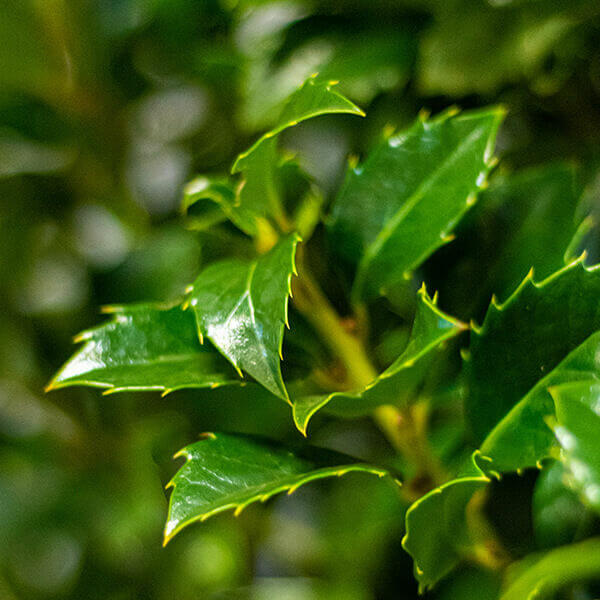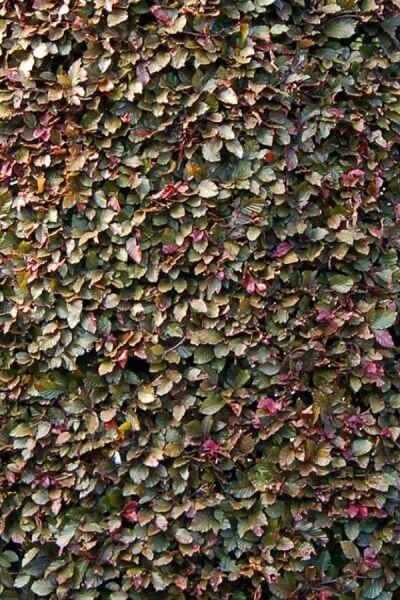Best Hedging Plants For Decking Borders
Improve your garden's appeal with lush hedge ranges such as Yew (Taxus), Thuja, Laurel, Photinia, and Bamboo, commemorated for their structural stability and ecological advantages.
Yew and Thuja supply evergreen protection and winter season strength, while Laurel uses quick development and broad, aromatic leaves.
Photinia includes seasonal appeal with its dynamic red foliage, and Bamboo lends a low-maintenance, serene ambiance.
These hedges improve air quality, lower noise, and develop tranquil, private areas.
Proper planting, spacing, and upkeep ensure energetic growth and eco-friendly harmony.
Check out how these rich ranges can elevate your garden's appeal and well-being.
Secret Takeaways
Change Your Garden With Lush Hedge Varieties
- Select Yew for its thick, evergreen development and exceptional durability.
- Choose Laurel for its quick development and broad leaves, ensuring fast personal privacy.
- Choose Photinia for its dynamic seasonal foliage, which turns a striking dark red.
- Make use of Bamboo for a low-maintenance, winter-hardy hedge with aesthetic appeal.
- Space plants 2-3 per meter and prune frequently for optimum growth and health.
Popular Hedge Plants
When transforming a garden with rich hedge ranges, it's necessary to think about popular hedge plants such as Yew, Thuja, Laurel, and Photinia due to their special characteristics and benefits.
Yew (Taxus) is highly respected for its durability and thick, green development, making it a prime choice for withstanding landscapes.
Thuja is noted for its evergreen foliage and robust winter strength.
Photinia adds seasonal vibrancy with red leaves that darken gradually, developing dynamic visual appeal.
Laurel uses rapid growth and fragrant, broad leaves, ideal for quick privacy.
Furthermore, Bamboo is an exceptional option for atmosphere, offering a low-maintenance, winter-hardy option that enhances the garden's visual with its elegant, swaying canes.
These choices deal with a range of horticultural requirements and choices.
Advantages of Garden Hedges
Garden hedges provide a plethora of advantages, making them a valuable addition to any landscape. These natural barriers are affordable to execute and provide significant wind defense, boosting air flow and contributing to noise decrease. The thick foliage of hedges like Thuja and Beech guarantees privacy by blocking exposure, creating a secluded and tranquil environment.
Hedges likewise play an essential role in microclimate guideline, offering a stable environment that promotes plant growth and minimizes temperature level changes. Their intricate leaf structures filter toxins, improving air quality and adding to a healthier garden environment.
Furthermore, hedges excel in sound reduction, taking in and deflecting sound waves to lower ambient sound levels. This double functionality of supplying both acoustic and visual personal privacy improves the overall serenity and visual appeal of any garden.
Planting and Maintenance Tips
For an effective hedge, meticulous preparation of the planting location is crucial. Guarantee the soil has correct pH and drainage to support strong root advancement.
Space the plants appropriately for the picked species. Water the hedge often throughout its preliminary growth stage, changing as needed with seasonal changes.
Execute a organized pest control and disease avoidance strategy, using chemical or natural treatments when necessary. Routinely check for aphids, termites, and fungal infections.
Apply mulch to retain moisture and reduce weeds. Seasonal pruning promotes thick growth and air circulation, vital for plant health.
Following these standards will assist you cultivate a lively, well-maintained hedge that improves the charm of your garden.
Spacing and Cutting Standards
Spacing and Cutting Standards
Correct spacing and trimming are crucial for cultivating healthy, aesthetically appealing hedges. Adequate spacing makes sure each plant receives adequate nutrients, light, and air flow.
Follow these guidelines for ideal hedge upkeep:
- Spacing: Position hedge plants 2-3 plants per meter to motivate robust growth.
- Pruning Methods: Routine pruning is necessary for keeping desired hedge height and shape. Cut new development in summer season and cut down older wood throughout winter season.
- Seasonal Care: Change trimming techniques and schedules according to seasonal requirements to ensure plant health.
- Hedge Height: Regularly display and cut to keep the preferred hedge height and accomplish uniform aesthetic appeals.
Following these steps will guarantee your hedge grows, enhancing both the appeal and functionality of your garden.
Picking the Right Hedge
Selecting the Right Hedge
Choosing the proper hedge includes assessing factors such as fully grown height, foliage density, and ecological durability. Successful hedge plant choice read more needs understanding each species' development qualities and site-specific adaptability.
For instance, Yew (Taxus) provides excellent durability and dense development, while Thuja is notable for its winter season durability. Additionally, considering upkeep requirements is important; fast-growing species like Laurel or Privet demand routine trimming, whereas low-maintenance alternatives like Bamboo or Ivy may be preferable for those seeking very little upkeep.
Ecological elements such as soil type, light availability, and wetness conditions should likewise assist the selection process. This cautious technique makes sure the selected hedges will flourish, providing both aesthetic and practical advantages to the garden landscape.
Shipment and Planting Guidance
To ensure your hedge plants grow, they must be delivered by specialized carriers and planted immediately upon arrival.
Follow these necessary steps for successful planting:
- Soil Preparation: Enhance the soil with natural matter to enhance drainage and nutrient content.
- Planting Depth: Produce a trench two times the width and equivalent to the depth of the root ball.
- Watering Strategies: Water thoroughly after planting, keeping the soil consistently moist but not saturated.
- Mulching: Apply a layer of mulch to keep wetness and reduce weeds.
Consumer Assistance and Service
Offered the crucial role of prompt assistance in horticultural pursuits, our customer support team is available six days a week through telephone, email, and social media to offer expert advice and swiftly address any concerns. Their dedication to fast action times makes sure client fulfillment by solving questions connected to plant health, ideal planting techniques, and maintenance schedules.

Accessibility
-----------------
Within 24 hours
This comprehensive support group, reinforced by an excellent 9.3/ 10 customer rating, highlights our commitment to enhancing the gardening experience for every client.
Regularly Asked Questions
For How Long Does It Take for Hedge Plants to Establish?
Hedge plants typically require one to three years to end up being totally developed, with the precise duration varying by species and growing conditions.
Effective care throughout this vital duration is important for robust growth. Constant watering, watchful weed control, and suitable fertilizer application are pivotal in promoting strong root advancement.
For instance, fast-growing species like Laurel might develop faster, while slower-growing varieties such as Yew may take longer. Persistent maintenance speeds up the establishment procedure, leading to dense and healthy hedges.
What Are the Best Hedge Plants for Privacy?
The concern of the very best hedge plants for personal privacy involves evaluating evergreen and deciduous choices.
Evergreen hedges like Thuja, Laurel, and Cypress provide year-round protection, guaranteeing constant privacy.
On the other hand, deciduous hedges such as Beech provide seasonal privacy, shedding leaves in chillier months.
Key upkeep suggestions for personal privacy hedges include routine cutting, fertilizing in spring, and proper spacing-- usually 2 to 3 plants per meter.
Additionally, consistent watering and thorough weed removal are essential for promoting healthy, thick development.
Can Hedge Plants Attract Wildlife to My Garden?
Yes, hedge plants can draw in wildlife to your garden by supplying essential benefits like shelter, food, and nesting websites, therefore enhancing local biodiversity. Yew, holly, and laurel are exceptional for attracting birds, while ivy supports a variety of insects.
However, it is necessary to keep in mind that there are some downsides, such as increased upkeep to manage pests and regular upkeep. Carefully choosing and preserving hedge ranges can assist stabilize these downsides and benefits, ultimately cultivating a dynamic and sustainable community in your garden.
Exist Any Flowering Hedge Plants Available?
Yes, there are flowering hedge plants offered that can boost the beauty of your garden.
For example, Elaeagnus, likewise called Olive Willow, produces fragrant white flowers in the fall, adding a touch of sophistication.
Photinia, another popular choice, showcases lively red leaves that mature into a rich green, developing a dynamic visual effect throughout the seasons.
To guarantee these plants prosper, it's important to practice proper pruning methods and seasonal upkeep, such as cutting brand-new development in the summer season and cutting back in the winter.
These steps will help preserve the health and aesthetic appeal of your flowering hedges.
How Do I Avoid Bugs in My Hedge Plants?
To avoid pests in hedge plants, employ natural pest control techniques and keep correct hedge care. Present beneficial pests like ladybugs, which prey on harmful pests, to create a well balanced environment.
Frequently check your hedges for indications of infestation and quickly eliminate any affected parts to prevent the spread. Ensure the health of your hedges by using well balanced fertilizers and offering sufficient water.
Use mulching to retain soil moisture and correct spacing to lower plant tension and promote robust growth. These practices collectively help in decreasing bug problems and maintaining a healthy hedge.
Conclusion
In essence, choosing the ideal hedge ranges such as Yew, Thuja, and Laurel can transform any garden into a relaxing haven. These plants provide year-round plant, improve aesthetic appeal, and offer useful benefits like noise decrease and wind security.
Proper planting strategies, accurate spacing, constant watering, and seasonal cutting are important for optimal development.
Trustworthy delivery services and expert client support make sure a seamless experience from purchase to planting, making it easier than ever to elevate your outside space.
Garden hedges offer a wide variety of benefits, making them an important addition to any landscape. These natural barriers are affordable to carry out and offer significant wind security, enhancing air blood circulation and contributing to noise decrease. The dense foliage of hedges like Thuja and Beech guarantees privacy by obstructing presence, producing a secluded and peaceful environment.

Pruning Methods: Regular pruning is essential for keeping preferred hedge height and shape. Trim brand-new development in summer and cut back older wood throughout winter season.